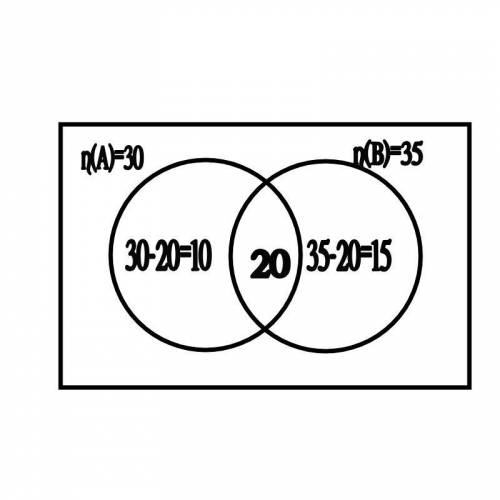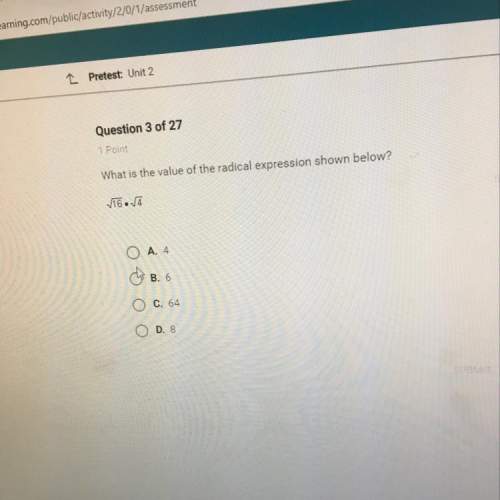
Mathematics, 13.03.2020 02:10 vrw28
Suppose a list A contains the 30 students in a mathematics class, and a list B contains the 35 students in an English class, and suppose there are 20 names on both lists. Find the number of students: (a) only on list A, (b) only on list B, (c) on list A or B (or both), (d) on exactly one list.
a. List A has 30 names and 20 are on list B; hence 30 - 20 =10 names are only on list A.
b. Similarly, 35 -20 =15 are only on list B.
c. We seek n(A U B). By inclusion—exclusion,
n(AU B) = n(A) +n(B)- n(A⋂ B) = 30+35 -20 —45.
In other words, we combine the two lists and then cross out the 20 names which appear twice.
d. By (a) and (b), 10 + 15= 25 names are only on one list; that is, n(A⊕ B)= 25.

Answers: 1


Another question on Mathematics


Mathematics, 21.06.2019 17:30
Adiverr from the university of florida women’s swimming and diving team is competing in the ncaa zone b championships
Answers: 2

Mathematics, 21.06.2019 23:50
If the tip varies directly with the number of guest which equation represents between the tip,t, and the number of guest,g?
Answers: 1

Mathematics, 22.06.2019 02:00
Prove the following(cot0+cosec0)[tex](cot0 + cosec0) { }^{2} = \frac{1 + cos0}{1 - cos0} [/tex]
Answers: 1
You know the right answer?
Suppose a list A contains the 30 students in a mathematics class, and a list B contains the 35 stude...
Questions

History, 12.02.2020 19:53


History, 12.02.2020 19:53





Social Studies, 12.02.2020 19:53






Mathematics, 12.02.2020 19:53


Computers and Technology, 12.02.2020 19:53




Geography, 12.02.2020 19:53









